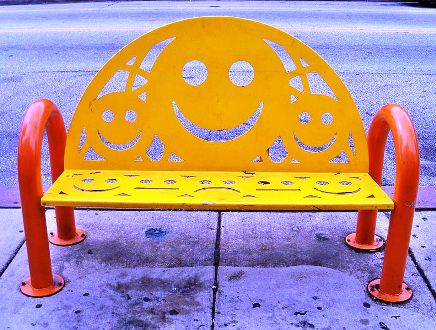
The smiley face emoticon, which is an integral part of the SMS generation's life, has turned 30.
The computer symbol for 'not serious' or now more generally "happiness", made up of a colon, dash and a right parenthesis, was born into existence on September 19, 1982,
when it was posted on an online bulletin board by Carnegie Mellon computer scientist Scott Fahlman.
Wednesday marked the 30th birthday of the emoticon, New York Daily News reported.
. . .

"If someone made a sarcastic remark, a few readers would fail to get the joke, and each of them would post a lengthy diatribe in response," Fahlman explained in a post on Carnegie
Mellon's website about the invention of the sideways smile.
"The problem caused some of us to suggest (only half seriously) that maybe it would be a good idea to explicitly mark posts that were not to be taken seriously," he added.
"In the midst of that discussion it occurred to me that the character sequence :-) would be an elegant solution ... So I suggested that," Fahlman said.
. . .

Fahlman also suggested the reverse, what has come to be known as a sad face, by using the other parenthesis marker.
"This convention caught on quickly around Carnegie Mellon, and soon spread to other universities and research labs via the primitive computer networks of the day," he wrote.
The emoticon apparently has deep historical roots, Fahlman closed his post by citing Russian writer Nabokov's seeming call for such a symbol in 1969, when he said, "I often think there should exist a special typographical sign for a smile, some sort of concave mark, a supine round bracket."
. . .

The New York Times has also delved into the origins of the emoticon before, pointing to a transcript of Abraham Lincoln's 1862 speech that seemed to contain a typewritten winky face.
Many emoticon historians also list the symbol as a descendant of the iconic "smiley face" designed in 1963 by Harvey Ball as part of a campaign for Massachusetts' State Mutual Life Assurance Company (for which he was reportedly paid just $45).
Still on staff at Carnegie Mellon, Fahlman is modest about his invention, which he says he's never profited from.